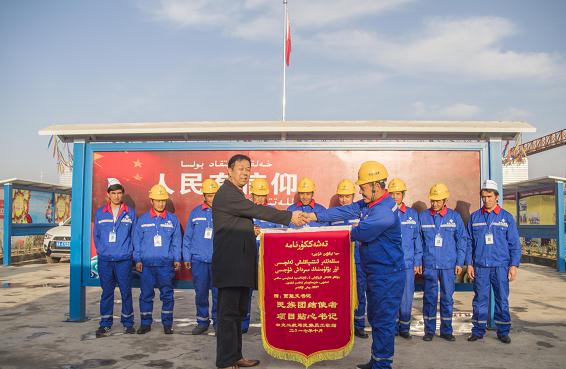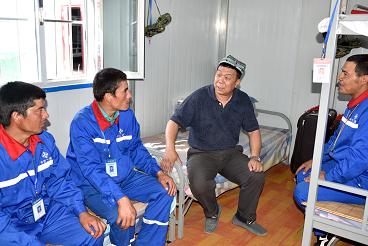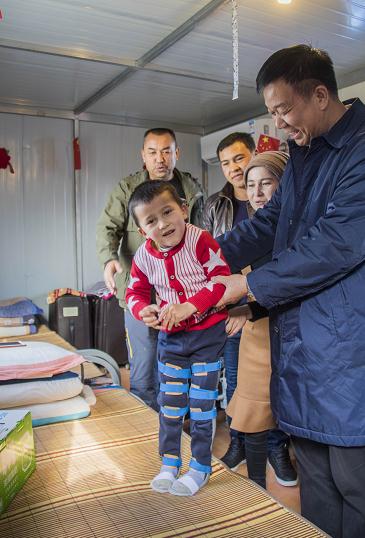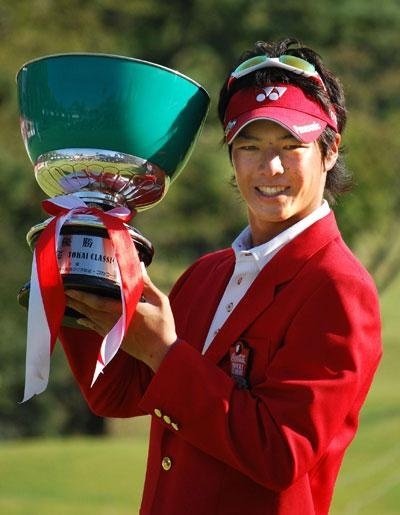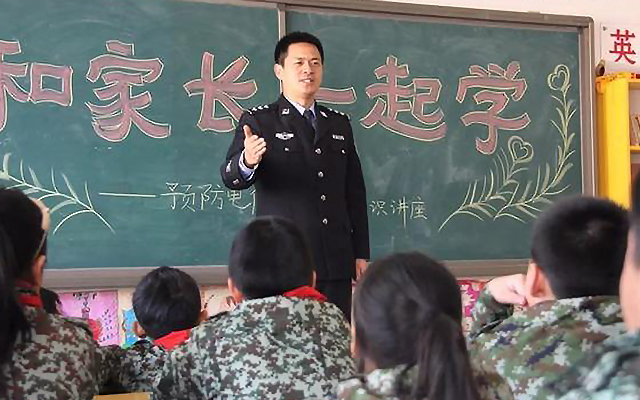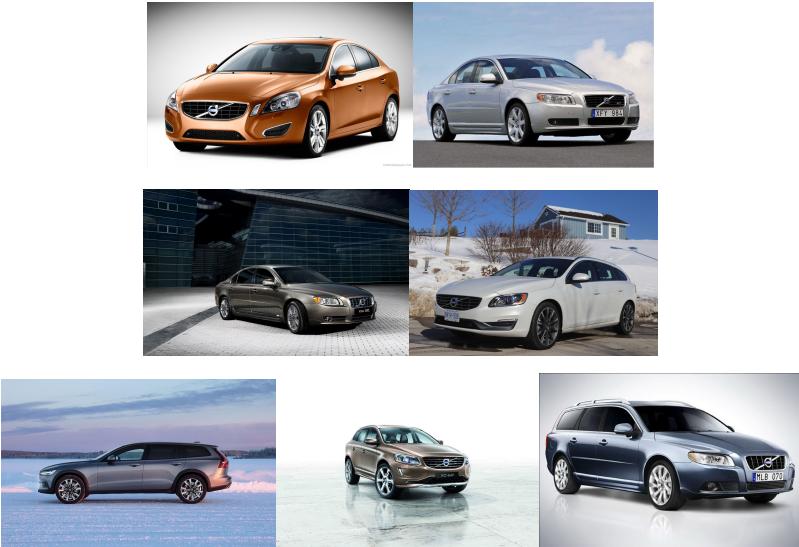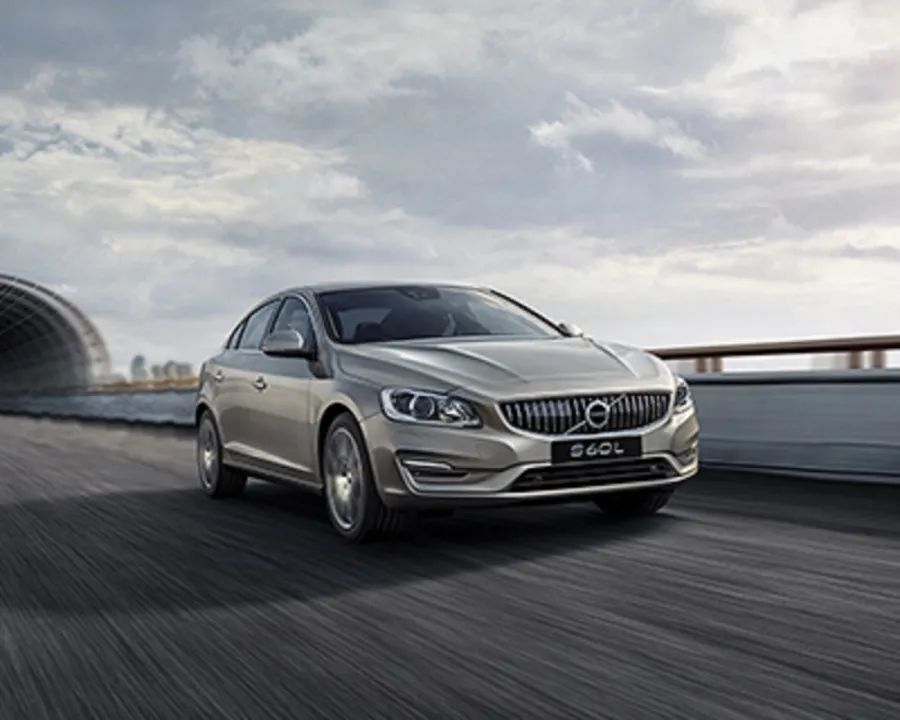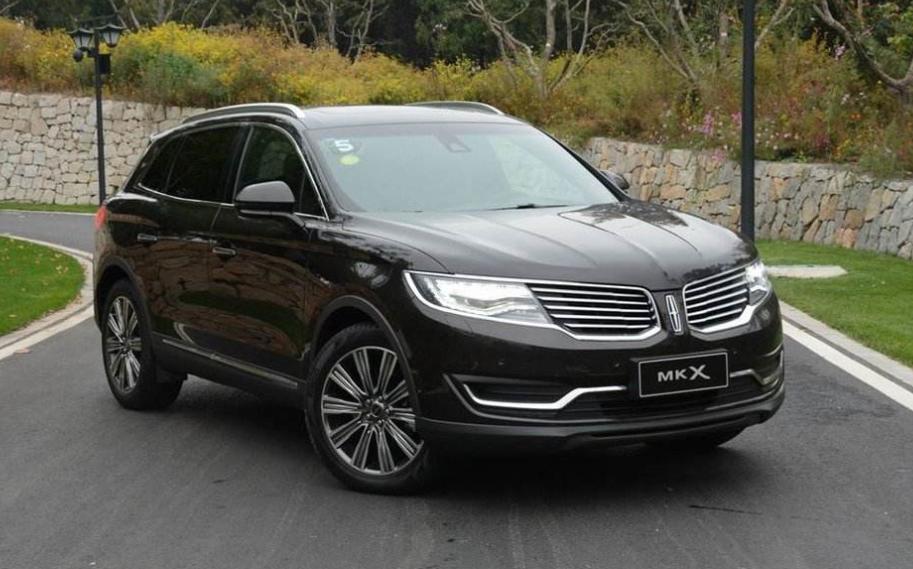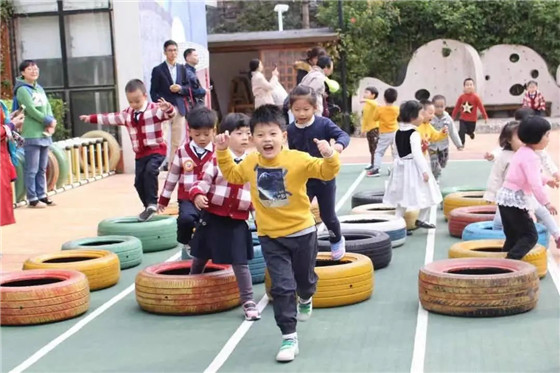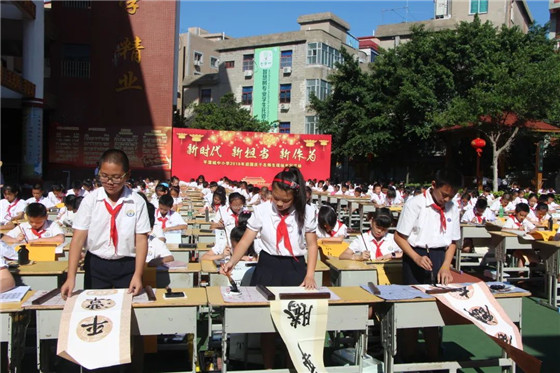() The business review of the Board of Directors in 2021 is as follows:
I. Industry situation of the company during the reporting period
(A) the macro environment facing the industry
2021 is the first year of the 14th Five-Year Plan, and the macro environment continues to change. China’s economy continues to repair in the context of the epidemic, GDP is growing steadily, and the economy is developing to high quality; Medical reform policies are frequent, and the state has implemented the healthy China strategy in depth to promote the balanced distribution of high-quality medical resources; The process of population aging has gradually accelerated, and the "three-child" policy has been fully liberalized, which has increased the market demand for health industry and the old-age service industry that combines medical care and health care, and the demand for children’s medication. With the release of the Outline of Guangdong-Hong Kong-Macao Greater Bay Area’s Development Plan, a number of policies have provided new dividends for Greater Bay Area’s medical and health construction.
(two) the basic situation, development stage and cyclical characteristics of the industry.
In 2021, the scale of the pharmaceutical market continued to grow, the linkage reform of "three medicines" continued to deepen, and the policies of the pharmaceutical industry were intensively introduced, which ushered in greater challenges and opportunities for the pharmaceutical industry.
1. Development of medical terminal market
In 2021, the growth of the medical terminal market picked up, but the development of the medical terminal market continued to be under pressure due to factors such as the multi-point spread of the epidemic and the accelerated promotion of centralized procurement.
PDB (data released by China Pharmaceutical Industry Information Center) Statistics of domestic sample hospital market show that the market size of sample hospitals rose by 10.24% in the first three quarters of 2021 compared with the same period in 2020. However, due to the low base in 2020, the growth rate of hospital market continued to slow down due to factors such as epidemic situation and centralized procurement, and only increased by 1.86% in the third quarter of 2021 compared with the second quarter. The annual hospital market sales in 2021 remained the same as that in 2011.
Zhongkang CMH retail data shows that in the first three quarters of 2021, the sales scale of retail pharmacies nationwide increased by 3.0%. In the second half of 2021, due to the repeated epidemic situation in some parts of China, the prevention and control measures of epidemic situation in retail pharmacies in some areas became stricter, the drugs related to the epidemic situation were banned, and some patients returned to hospitals and primary medical institutions under the influence of centralized procurement by medical institutions, and the passenger flow in retail pharmacies was challenged, with an increase of only 0.3% in the third quarter.
2, the pharmaceutical industry policy and influence
In 2021, the pharmaceutical industry policies were introduced intensively, and the linkage reform of "three doctors" continued to deepen. In medicine, it mainly involves many policies such as drug registration and approval, raw materials, drug patents, drug vigilance, development of traditional Chinese medicine and formula granules; In terms of medical insurance, there are mainly policies such as purchasing with quantity, adjusting and negotiating medical insurance catalogue, dual-channel medical insurance, DRG/DIP payment method, and medical insurance for urban and rural residents. Medical treatment mainly includes long-term prescription, public hospital reform, graded diagnosis and treatment, medical and health service reform and popularization of Sanming medical reform experience.
(1) The normalization and institutionalization of quantity procurement and the gradual expansion of its coverage have a great impact on the pharmaceutical industry.
The centralized drug collection organized by the state has been carried out in 6 batches, and a total of 234 kinds of drugs have been purchased. The market amount involved accounts for about 30% of the purchase amount of chemical drugs and biological drugs in public medical institutions. In 2021, the special procurement of insulin was carried out, and the centralized collection was expanded from chemical drugs to biological drugs for the first time. The collection of high-value medical consumables focuses on cardiology and orthopedics, two areas that the masses are most concerned about. The centralized procurement of cardiac stents has been running smoothly for one year, and the total number of selected stents is 1.69 million, which is nearly 1.6 times of the annual agreed procurement. In 2021, the state organized the collection of artificial joints for more complex orthopedic consumables, which further expanded the coverage of the reform.
The influence of quantity procurement on pharmaceutical business: the decline of sales revenue and gross profit margin has a great impact on the income growth and profit space of commercial companies; With the increase of distribution cost, the distribution frequency of centralized procurement products is often higher, especially in the newly opened primary medical institutions, which presents the phenomenon of small single purchase volume and high distribution frequency, which obviously increases the distribution cost; The gap between pharmaceutical commercial enterprises is widening, and the variety of centralized procurement is increasing, which also brings challenges and opportunities to commercial enterprises: due to factors such as scale, collectivization, informationization and capital chain, weak commercial enterprises can no longer support and bear the burden of purchasing with quantity. Large pharmaceutical commercial enterprises have a large variety of reserves, strong financial strength, fast delivery capacity, and a wide range of hospital customers, which provide convenient conditions for enterprises. Although the gross profit of overall distribution has declined, the industry position has been further consolidated due to the scale effect of purchasing with quantity, which can digest some costs.
The influence of quantity procurement on pharmaceutical retail: the winning varieties were shortlisted for price reduction, and the prices of pharmacy operating varieties were upside down, facing the pressure of price reduction. Even if you participate in centralized purchasing and solve channel problems, you still face price pressure; Monomer pharmacies lose their competitive advantage under the trend of centralized purchasing, accelerate the merger and acquisition of pharmacies, and further improve the chain rate of pharmacies; Accelerate the online layout, reduce the price of drugs, increase the operating cost of pharmacies, and gradually develop online business in pharmacies.
(2) Promote graded diagnosis and treatment and the construction of medical associations, and gradually open the grassroots market.
On November 4, 2021, the National Health and Wellness Commission issued the Work Plan for Improving the Comprehensive Capacity of County Hospitals under the "Thousand Counties Project" (2021-2025), aiming at meeting the medical service needs of the people in the county, consolidating and expanding the achievements of poverty alleviation and effectively connecting with rural revitalization, accelerating the improvement of the graded diagnosis and treatment system, and pushing county hospitals into a new stage of high-quality development. Through five years’ efforts, at least 1000 county hospitals in China will reach the level of medical service capacity of tertiary hospitals, laying a solid foundation for solving common diseases in cities and counties.
On November 22, 2021, the General Office of the National Health and Wellness Commission issued the Notice on Promoting the Experience of Classified Diagnosis and Treatment and the Construction of Medical Consortium in Sanming City, and put forward eight key tasks to promote the graded diagnosis and treatment and the construction of medical consortia with the goal of building a pattern of primary diagnosis, two-way referral, rapid and slow division and treatment, and linkage up and down, with the focus on promoting the high-quality development of public hospitals.
Graded diagnosis and treatment and the construction of medical associations have pushed the joint procurement of hospitals and the control of medical insurance fees to the ground. First of all, unify the catalogue, and the general minimum threshold for drugs to enter the catalogue will be price; Expanding the promotion coverage and entering the medical association procurement catalogue means that the products have entered many hospitals within the medical association, and the crowd tactics that every hospital used to run in the past are expected to reduce costs. Secondly, unified distribution, the initiative of medical institutions to upstream distribution businesses and pharmaceutical companies has been greatly improved. Whether it is secondary bargaining, distribution or payment, the trend of medical institutions suppressing upstream and downstream industries and businesses is even more difficult to reverse. Finally, on the basis of purchasing with quantity, linking quantity with price, reducing price with quantity and centralized purchasing, all medical associations further bargain with quantity to form a second bargaining.
(3) "dual channels" help negotiate the landing of drugs, which is beneficial to the development of retail business.
The dual-channel policy accelerates the circulation of prescriptions and the separation of medicines, and transfers part of the functions of the original in-hospital management of medicines to the outside of the hospital, so as to ensure that the compliance institutions in and outside the hospital enjoy equal medical insurance payment rules; Relevant national conferences also show that the supervision of medical insurance funds will be strengthened with the prescription circulation center as the core. In the future, under the background of higher and higher requirements for policy guidance, compliance and professionalism, the competitiveness of leading pharmaceutical enterprises will be strengthened and the industry concentration will be further enhanced.
II. Main businesses of the Company during the reporting period
(1) The company’s main business includes pharmaceutical distribution and retail, as follows:
1. In the field of pharmaceutical distribution, it is mainly based on Guangdong and Guangxi, and the scale of pharmaceutical distribution business in Guangdong and Guangxi is leading.
As of December 31, 2021, there were 1092 secondary and tertiary medical institutions; 7870 primary medical clients; There are 6,414 retail terminal customers (chain pharmacies, single stores and self-funded pharmacies in hospitals). Sinopharm consistently distributes Guangdong and Guangxi regional market segments, including drug distribution and equipment consumables, retail direct sales and retail diagnosis and treatment, drug and machinery linkage, retail development, and the whole business keeps a relatively leading position in the industry; Innovate business, constantly explore new customer cooperation modes, and become a medical supply chain management solution and service provider; Improve domestic logistics planning and construction, provide third-party logistics professional services, and build leading logistics and supply chain service capabilities. By continuously integrating the distribution and logistics business, deeply penetrating the terminal market, perfecting the ladder distribution network, and building an intelligent supply chain, we are committed to becoming the provider of medical and health products and services with the strongest influence, the highest share, the most complete variety, the best service and the fastest delivery in China Southern District.
2. In the field of pharmaceutical retail, Guoda Pharmacy under the company is a leading pharmaceutical retail enterprise in China.
By the end of 2021, Guoda Pharmacy had 8,798 stores in 20 provinces, autonomous regions and municipalities directly under the Central Government, forming a pharmacy network covering coastal urban agglomerations in East China, North China and South China, and gradually spreading into the northwest, Central Plains and inland urban agglomerations, with a sales scale of over 22 billion, keeping the sales scale ahead of the industry; Guoda’s pharmacy business mainly relies on social retail pharmacies, and pays attention to developing a professional service system with medical resources as its core competitiveness, and creates a number of retail clinics and hospitals that integrate medical services and health product sales. At the same time, Guoda Pharmacy actively expands innovative business, actively explores and enriches new business channels, enhances professional service capabilities, and is committed to the transformation from traditional pharmaceutical retail enterprises to innovative service-oriented enterprises. Guoda Pharmacy promotes the cooperation between key brands and suppliers to tap the potential, speeds up the establishment and improvement of DTP business and continues the health service system, and builds the industry-leading professional service capability through regular retail management.
(2) Business model
1. Distribution business
(1) Procurement mode
The company has established a "foreground-background" division of labor and cooperation procurement mechanism, which effectively reduces the procurement cost. The "front desk" is the purchasing department, which, according to business requirements, looks for the source of goods, establishes the first variety, and conducts price comparison and business negotiations on product quality requirements, supply cycle, supply price and payment cycle. Effectively manage suppliers, including supplier qualification, service quality, integrity, etc., establish supplier files and organize supplier evaluation. The "background" is the supply chain department, which is responsible for integrating the resources of supply chain links, grasping the supply chain information as a whole, realizing professional division of labor, promoting integrated management, creating an integrated service background, assisting the "front desk" business front line and making daily purchase contract orders.
(2) Sales model
In terms of sales model, the company carried out transformation and innovation according to the strategy of "one body and two wings" in the distribution sector.
For the traditional business, the distribution implements the business model of "network sinking" in the southern district of China, which is the main channel supplier of drugs in Guangdong and Guangxi, and realizes the full coverage of the national drug market. At the same time, we will create special businesses such as equipment, medical beauty, medical care, Chinese herbal pieces, and import, and vigorously expand the terminal markets such as primary medical institutions and private hospitals to improve product supply guarantee and grassroots network coverage.
The retail direct selling business undertakes the company’s strategy of "integration of wholesale and retail", promotes the layout of retail terminals nationwide, and is based on the distribution network of top 100+professional DTP pharmacies, project centralized procurement and third terminal agents in China, deeply cultivating South China and radiating the whole country;
At the same time, the company provides customers with one-stop overall solutions and diversified value-added services and innovative services; 1) Through hospital supply chain projects, equipment SPD, regional distribution, regional medical services (inspection and disinfection), prescription dispensing and undertaking, etc., the innovative mode of medical services will be promoted. Its subsidiaries, Sinopharm Guangzhou Medical Technology Co., Ltd., Sinopharm Guangzhou Medical Management Co., Ltd. and Sinopharm Guangzhou Medical Supply Chain Service Co., Ltd., have carried out effective business development and practice on professional service products such as medical equipment life cycle management, reagent consumables and disinfection business. 2) In terms of third-party logistics business, it undertakes warehousing, distribution and other value-added services of third-party customers such as medical equipment manufacturers, medical equipment businesses, disease control centers and vaccine manufacturers, and provides professional third-party logistics solutions for integrated services such as third-party bonded logistics and national warehousing and distribution logistics services.
(3) Logistics distribution mode
After long-term development and accumulation, the logistics center has established a perfect modern medical logistics service system, integrated warehousing and distribution and intelligent supply chain service capabilities. The logistics center has a storage area of more than 180,000 square meters and more than 260 self-operated transport vehicles in Guangdong and Guangxi. Customer types of services include upstream and downstream customers of distribution and operation headquarters, and third-party logistics customers include innovative pharmaceutical companies, disease control customers, pharmaceutical machinery manufacturers and commercial companies, vaccine manufacturers, etc. The distribution scope is the whole country. Distribution terminals include hospital direct sales customers, primary medical customers, small social medical customers, commercial customers, retail direct sales customers, CDC and individuals. The logistics center relies on the national logistics resources of Sinopharm Holdings and combines the carrier resources to achieve full coverage of medical logistics in urban and rural areas across the country. The company’s logistics products mainly include: warehousing inspection service, storage service, delivery service, insurance and supply chain optimization and other value-added services; Value-added services such as transportation medicine city distribution service, medicine special car service, medicine express service and supply chain optimization.
2. Retail business
(1) Procurement mode
The procurement mode of Guoda pharmacy is divided into centralized procurement and local procurement; The purchasing methods of centralized purchasing are divided into unified signing and separate purchasing and unified signing and unified purchasing; Three-party contracts (headquarters, regional companies and suppliers) are signed by the headquarters, and regional companies directly purchase goods from suppliers. Unified signing and unified procurement is signed by the headquarters and suppliers, and the headquarters will concentrate on purchasing goods, and then the headquarters will distribute them to regional companies for sales. The procurement method of local procurement is that the regional company directly signs a contract with the supplier, and the region purchases and sells itself. In 2021, the sales of centralized mining accounted for 44%, and the local mining accounted for 56%.
(2) Sales model
The retail business of Guoda Pharmacy is mainly carried out in the form of chain operation, covering two parts: direct operation and joining. By December 2021, there were 8,798 total stores, 7,257 direct stores and 1,541 franchise stores, with 20 provincial markets. Mainly engaged in Chinese and western medicines, Chinese herbal pieces, medical equipment, health food, health food and supplies; Actively promote the () intercommunication of medicines in internet plus in business mode, and open up "5+X" retail diagnosis and treatment innovative stores in combination with Chinese medicine, western medicine, rehabilitation physiotherapy and other services. At the same time, we continue to optimize the new mode of chronic disease diagnosis and treatment and member management. At present, we have nearly 24 million effective members, establish health records for chronic patients, follow up for a long time, and cooperate with domestic and foreign head suppliers to continuously improve the professional pharmacy service ability, provide quality health products and services for the broad masses of the people, and practice the social responsibility of state-owned enterprises.
(3) Logistics distribution mode
There are two main types of logistics warehouse management modes for the headquarters and subsidiaries of Guoda Pharmacy. One is the self-management logistics mode, that is, the subsidiaries rent warehouses for the warehouse operation and distribution services of stores and external customers, and the other is the logistics distribution mode of entrusting the state-controlled system, that is, the subsidiaries entrust local state-controlled companies for storage and transportation based on factors such as cost or resource sharing. At present, the proportion of entrusted distribution is 27%. There are three modes of transportation, self-operated distribution, the second is entrusted to the third party, and the third is mixed transportation management, self-operated+entrusted mode.
(III) The Company’s annual performance and main work in 2021
The year 2021 is a significant moment for the Communist Party of China (CPC)’s centenary birthday and a key node for the historical intersection of "two centennials". Domestic epidemic prevention and control and economic and social development are under pressure. Sinopharm consistently adheres to the guidance of Socialism with Chinese characteristics Thought, the supreme leader in the new era, thoroughly implements the spirit of the 19th National Congress of the Communist Party of China and the previous plenary sessions of the 19th National Congress, fully implements the general requirements for party building and the party’s organizational line in the new era, and conscientiously implements the deployment requirements of Sinopharm Group and Sinopharm Holdings. Focusing on the strategic policy of "technology empowerment, service upgrade, integration of wholesale and retail, and dual drive of industry and finance", Sinopharm continued to push forward the "14 th Five-Year Plan" of "1-2-6" with one core, two networks and six platforms. Under the annual work idea of "building a new development pattern and sustained high-quality development", Sinopharm has made concerted efforts with 40,000 employees to achieve a new start in the first year of the "14 th Five-Year Plan"
Operation in 2021
In 2021, under the influence of the epidemic situation in COVID-19, centralized drug collection and other policies, Sinopharm faced the pressure unanimously, took various measures simultaneously and made great efforts to start. In the whole year, the accumulated operating income was 68.358 billion yuan, a year-on-year increase of 14.60%; Operating profit was 1.952 billion yuan, down 9.77% year-on-year; The net profit attributable to shareholders of listed companies was 1.336 billion yuan, a year-on-year decrease of 4.67%. The decline in profit was mainly due to the results of the company’s impairment test of goodwill and intangible assets this year.
Following the principle of prudence, provision for impairment of goodwill and intangible assets (brand use right and sales network) is made for Shanghai Dingqun Enterprise Management Consulting Co., Ltd. (and Sinopharm Holdings Tianhe Jilin Pharmaceutical Co., Ltd.). At the same time, the retail sector opened 1155 new direct-operated stores in 2021. The initial investment in new stores was large, and the benefits have not yet appeared. Due to the multiple influences of industry policies and epidemics, the profit space has narrowed.
In 2021, Sinopharm’s consistent distribution business completed a total operating income of 46.833 billion yuan, up 14.03% year-on-year, and realized a net profit of 947 million yuan, up 10.74% year-on-year. Among them: the income from traditional medical direct selling business was 31.9 billion yuan, up 15% year-on-year; Retail direct sales revenue was 6.2 billion, a year-on-year increase of 1%; Retail medical income was 2 billion, a year-on-year increase of 19%; The income from commercial distribution business was 5.2 billion yuan, a year-on-year increase of 19%.
In 2021, Guoda Pharmacy completed a total operating income of 22.478 billion yuan, up 15.64% year-on-year, and realized a net profit of 184 million yuan, down 61.38% year-on-year. The net profit of returning to the mother was 65 million yuan, a year-on-year decrease of 80.88%. Among them: the revenue of retail formats (including direct stores and franchise stores) was 17.99 billion, up 16.3% year-on-year; Distribution revenue was 4.1 billion, up 15% year-on-year.
In 2021, the company’s accumulated investment income in joint ventures was 333 million yuan, down 5.91% year-on-year.
1. gather strength to fight the epidemic and show the responsibility of central enterprises.
By December 2021, Sinopharm’s subsidiaries at all levels had obtained 67 qualifications such as medicine and epidemic materials reserve (including 2 qualifications for central medicine reserve; 12 provincial and municipal qualifications; The number of central direct fund reserves is 25; The government has 28 qualifications for epidemic prevention and control and special procurement), and has successively completed the emergency distribution of materials in several epidemic areas in Guangdong and Guangxi.
Undertaking the storage and distribution of disease control vaccines in Guangdong and Guangxi, setting up a special vaccine command team/operation team, responding quickly on duty 24 hours a day, investing nearly 2,000 square meters in cold storage and 120 refrigerated trucks, undertaking 60% of COVID-19 vaccine storage and distribution services in Guangdong Province, and signing 40 disease control contracts, covering about 1,700 inoculation sites; More than 3.4 million COVID-19 vaccines were distributed in Guangxi, covering more than 130 inoculation sites.
In response to the local government’s requirements for epidemic prevention and control, the emergency mode of "Enterprise WeChat customer service guidance+store order taking+logistics car delivery" was launched in the closed environment of the epidemic outbreak isolation area, and it was open all day, providing professional consultation and medicine delivery services for chronic patients in the epidemic isolation area; Assist the hospital to open an Internet prescription circulation channel to meet the online follow-up and medication needs of patients in epidemic isolation areas. Many subsidiaries of the company won the anti-epidemic awards issued by the government and industry associations, and the advanced deeds of fighting the COVID-19 epidemic were included in the briefing on the study and education of party history carried out by the state-owned assets system of Guangdong Province and the Guangdong Provincial Committee of the Communist Youth League.
2. Consistent distribution business of Sinopharm: Consolidate traditional business, develop innovative business, and continuously improve market competitiveness.
(1) Traditional business:
Traditional business further stimulates vitality, becomes stronger and bigger, and leads the industry. Consistent distribution of Sinopharm actively grasps the opportunity of centralized procurement policy and fully obtains the distribution right of centralized varieties. In the year, the distribution rate of all countries and provinces in Guangdong and Guangxi exceeded 95%, ranking first in the distribution rate; At the same time, we actively seize the opportunity of dual-channel market and strive for the distribution right of dual-channel products. The entrusted distribution rate of products exceeds 80%. Purchase and sales linkage, accelerate the upstream and downstream icebreaking, and continuously improve the market share; Promote marketing transformation, build a professional marketing team in the field of cancer and chronic diseases, and carry out CSO cooperation mode in depth; Strengthen the development and introduction of new potential suppliers, continuously optimize the hierarchical management of suppliers, institutionalize the development of supplier cooperation projects, and introduce 700 new products through multiple channels.
The winning rate of Chinese herbal pieces in hospitals has increased, and the market expansion of refined herbal pieces has achieved initial results, with the overall business increasing by 45% year-on-year; Medical beauty opens the C-end marketing model.
(2) Retail direct selling:
Promote the national top 100 chain projects, deepen cooperation and enhance product introduction. To speed up the network layout of member stores, the total number of member stores has reached 1313, with sales increasing by 66% year-on-year. Continue to give full play to the advantages of e-commerce B2B, optimize online platform services, increase online saleable product specifications, promote targeted product specifications, and increase the frequency of customers’ online orders.
(3) Retail diagnosis and treatment:
Continue to speed up the layout of retail clinics in Guangdong and Guangxi. There are 120 large pharmacies controlled by Sinopharm in Guangdong and Guangxi (with a net increase of 20 stores in the whole year), including 91 in Guangdong and 29 in Guangxi; 35 stores with "dual-channel" qualification have been obtained, and the brand advantages of "medical insurance+commercial insurance" have been continuously exerted, and the sales have shown a steady growth trend. There were 31 prescription circulation projects, and the total circulation increased by 124%.
(4) Equipment consumables business:
Actively expand to build a commercial platform with upstream manufacturers, open a device experience center, explore the marketing model of household devices, set up a clinical service team, realize the extension of the service function of the commercial platform, explore the cooperation model of medical devices with large access, and develop the integration of medical devices in the whole province.
(5) Innovative business:
Actively promote the service transformation, and develop to C logistics/services in the hospital, home and community medical care and health care, medical association/medical community primary medical services, retail diagnosis and treatment/retail direct sales and other directions. Integrate resources, promote the specialization and platform construction of innovative business, and set industry benchmarks. Many projects have won the top ten demonstration cases and excellent cases of service innovation in pharmaceutical supply chain.
(6) the third party logistics:
Vigorously develop third-party logistics services, and add state-controlled Guangzhou and Shanghai equipment warehouses and Sinopharm Holdings Guangzhou public bonded warehouses. The disease control business increased by 197% year-on-year, the innovative pharmaceutical business increased by 201% year-on-year, and the pharmaceutical machinery business increased by 15% year-on-year. The vaccine business maintains a leading position in the regional market.
3. Guoda pharmacy business: focus on strategy, improve quality and efficiency, consolidate the scale of existing business and explore innovative business development.
(1) Accelerate the network layout of the whole network and promote the expansion and sinking of stores.
By the end of 2021, the total number of pharmacy stores in Guoda was 8,798, an increase of 1,138 compared with the beginning of the year, including 1,155 newly opened direct-operated stores, 244 newly added through mergers and acquisitions, and 93 newly joined stores, with a total increase of 1,138 after deducting the impact of store closure and store transfer.
(2) Focus on building a self-operated e-commerce platform and continue to promote online and offline integration.
Focus on the development and construction of self-operated platforms, which have been launched in 26 regional companies and over 6,000 stores. To build a self-media platform for Guoda Pharmacy, 14 regional subsidiaries have opened 28 video numbers. Improve the quality of third-party O2O operations, increase the number of online stores to 7,000, increase the number of operating products to 2,000 SKU//store, and continuously improve the gross profit margin of O2O. The O2O business introduces traffic platforms such as Ping An Good Doctor to sell drugs at night. The annual sales of e-commerce business (including B2C) reached 2.23 billion, a year-on-year increase of 99.6%.
(3) Continue to innovate business models and create new retail of medicine.
1) Actively carry out the prescription outflow project and build an Internet hospital: in response to the "dual-channel" policy of medical insurance, 13 new medical insurance stores were added throughout the year; In cooperation with 16 Internet hospital platforms, prescription outflow projects have been carried out in Shenzhen, Inner Mongolia, Xinjiang, Jilin and Shenyang, creating a one-stop service of "Internet diagnosis and treatment+prescription online circulation+drug delivery to home"; Jiaren Medical Health (Hainan) Co., Ltd., a newly established joint venture, has obtained the license of Internet Hospital and completed the system docking.
2) Create a new retail model and promote service upgrade: create the first new concept store with SPS+ great health integration, and the store design won the "Top Ten Pharmacy Retail Model Innovation Award"; 340 stores are open 24 hours a day to provide night medicine purchase service; Set up 217 panda self-service medicine vending machines to provide intelligent service of self-service medicine purchase.
3) Explore the construction of digital intelligent unattended pharmacy: actively explore various digital application scenarios such as digital shelf+machine vision+multi-sensor fusion technology to realize non-inductive payment, artificial intelligence to assist in-store customers and drug purchase tracking, and pilot "non-inductive payment" in Shenzhen Guoda Pharmacy and "code scanning payment" in Shanghai Longhua East Road Store.
(4) Continue to pay attention to the improvement of gross profit, and set up a gross profit improvement project team (procurement, commodities, private brands, marketing and operation), focusing on the adjustment of sales structure and the control of gross profit margin of commodities themselves; The main index of gross profit margin basically achieved the annual task.
(5) Vigorously promote the systematic development of private brands.
We promoted the systematic construction of our own brand business, and protected our own brand and "China-made" products at home. The OEM business increased by 115% year-on-year. Create a new model, create new growth points, create a sales model of drainage products "Jiebaonuo" cotton tablets, and an innovative development model of industrial and commercial cooperation in the Chinese medicine system.
(6) Continue to build a professional pharmacy service system.
Carry out training on drug information platform, covering 31,863 shop assistants and managers nationwide, and carry out training around five modules: professional foundation, patient education, practical application, chronic disease goods and related goods; Organized the training of licensed pharmacists, and 476 employees obtained the qualification of licensed pharmacists; Provide health management services, and provide professional services for over 7 million chronically ill members by means of health testing, member filing, health education and medication guidance; To improve the viscosity of members, Guoda Pharmacy cooperated with the third party Yiyouhui to build a member platform, and has launched several cooperation projects with a number of foreign-funded manufacturers.
4. Improve quality, increase efficiency and seek benefits
Normalization promotes the special work of improving quality and increasing efficiency. Improve the concentration of funds, enjoy tax incentives, revitalize resources and save costs. Human resources investment and business have maintained a benign synergy, and the scale of personnel has been continuously and dynamically optimized. The growth rate of team size is much lower than that of revenue. Accelerate the continuous optimization of the company’s business structure and continue to carry out the "two gold" pressure control. Take one enterprise and one policy for subordinate loss-making enterprises, refine the measures to turn losses into losses, and increase the intensity of special assessment.
5. Continue to promote comprehensive digital transformation.
Promote integrated information management, and continuously optimize management processes and business links with digital projects. Strengthen basic information management, establish a stable and efficient basic equipment support system, carry out database inspection and optimization, and complete the construction of Guangzhou-Shenzhen disaster recovery platform. Promote the digital project of management platform and business system, improve the financial sharing platform, switch the NC unified financial platform to the national pharmacy, and pilot the online financial robot. Distribution revolves around the strategic deployment of "one body and two wings", and carries out the docking of supply chain automation, micro-shopping malls, dual channels and prescription circulation; Guoda Pharmacy promotes the establishment of several digital transformation projects, such as unmanned intelligent pharmacy, business system optimization, unified DTP system online use, online mall system and OMS system optimization and construction, etc.
6. Empowering science and technology to optimize supply chain efficiency
Continue to promote logistics network planning. At present, the company has 61 self-operated+entrusted logistics centers, with a total area of 370,000 square meters. It has established an index system to carry out national supply chain logistics monitoring, and carried out national logistics planning and B2B2C planning integrating wholesale and retail, breaking the decentralized layout of "one place and one warehouse" and improving the efficiency of warehouse network; Layout logistics wholesale and retail integration, joint supply, joint inventory, joint network.
Promote the intelligent transformation of the number of logistics warehouses, and create the 3A intelligent logistics solution (AS/RS+AMR+AI). By using OCR+AI visual identification system, the state-controlled Guangdong Logistics introduced intelligent equipment such as robotic arms and AGV smart cars to get through the logistics management system, which increased the warehouse storage density by 10% and the overall efficiency by 25%. AGV unmanned warehouse realizes its own FYWMS system docking AGV scheduling, realizes multi-floor intelligent equipment scheduling, and effectively improves the efficiency of supply chain.
7. Continue to promote the core strategy of wholesale and retail integration.
Dig deep into the connotation and value of "wholesale and retail integration" and promote the extension of resources to the upstream and downstream of the industrial chain. Start the expansion of the pilot area of wholesale and retail integration, and select 10 regions including Shanxi and Inner Mongolia for promotion, totaling 15 regions. On the basis of "one place, one policy", we will continue to promote it dynamically and rely on the operational characteristics of various places to export effective business models and profit models. Guangdong province’s wholesale and retail collaborative sales reached 1.03 billion.
During the reporting period, the operation of retail stores:
1. By the end of 2021, Guoda Pharmacy had 7,257 directly operated stores, with a sales income of 16.64 billion yuan; There are 1541 franchise stores, with a distribution income of 1.34 billion yuan.
Remarks: North: Liaoning, Shanxi, Inner Mongolia, Beijing, Tianjin, Hebei, Jilin;
East China: Shanghai, Jiangsu, Anhui, Shandong, Fujian, Zhejiang;
South China: Guangdong and Guangxi;
Central China: Henan and Hunan;
Northwest: Ningxia and Xinjiang;
Southwest: Yunnan.
(1) In 2021, 1,155 directly operated stores were opened and 347 stores were closed, with a net increase of 808 stores.
(2) The store’s medical insurance qualification.
By December 31st, 2021, the company had 7,257 direct chain stores, and 6,338 pharmacies had obtained the qualification of "designated retail pharmacies for medical insurance", accounting for 87% of the total number of pharmacies in the company.
2. Changes of main sales indicators
(1) Store operation by region
(2) The operating efficiency of the company’s direct stores during the reporting period.
Average daily operating income = operating income including tax of the store in the current year/business days of the store in the current year.
3, the top ten stores operating income.
4. Category structure of retail terminal
5. Procurement and suppliers
The commodity suppliers of Guoda Pharmacy are mainly external suppliers, assisting some affiliated enterprises and their own brands of Sinopharm Group. Top 5 suppliers in 2021:
6. Member management and service business
In 2021, the company’s member sales accounted for 67%, which was unchanged from that in 2020. At the same time, the number of member transactions in 2021 increased by 25% compared with 2020. The proportion of member transactions in the total number of transactions increased from 56% in 2018 to 64% in 2021. In the process of continuous sales improvement in the past three years, the number of member transactions has maintained a steady growth every year, which has played a key supporting role in the steady improvement of the company’s performance.
By optimizing the product structure, the company can improve its operating efficiency. In 2021, the unit price of the company’s member customers will be 108 yuan, and the unit price of non-member customers will be 82 yuan. The main difference between members and non-members lies in the degree of brand recognition and the differentiation of the types of goods purchased.
7. Warehousing and logistics during the reporting period
By the end of 2021, Guoda Pharmacy has 33 logistics centers/distribution centers in 20 provinces (including 9 entrusted logistics and 24 self-owned logistics), and the total area of its own warehouses is 190,000 square meters; Among them, the cold storage area is 1463 square meters, and the cold storage volume is 3880 cubic meters, which is used for the storage and circulation of normal temperature, cool and refrigerated goods, ensuring the distribution of all customers’ goods; There are 173 self-owned logistics vehicles in China, including 20 refrigerated trucks; The number of logistics employees in NUS is 1387; In China, 20.49 million pieces were swallowed and 98.86 million orders were made.
8. On-line sales during the reporting period
In 2021, online sales increased by 56% year-on-year, of which self-operated platform business increased by 33%, third-party O2O business increased by 93%, and B2C business increased by 8%. The O2O network layout covers over 7,000 stores in 23 provinces across the country.
9, to undertake prescription outflow and chronic disease management
With the continuous deepening of the national medicine reform, drugs have collapsed on the basis of medicine-supporting medical model through policies such as purchasing with quantity, centralized bidding and dual channels, and prescription outflow has gradually become a trend. In 2021, the overall prescription sales of pharmacies in Guoda were 9.98 billion (including DTP), up 21.3% year-on-year. Among them, represented by Xinjiang, the sales of prescription drugs in 2021 were 720 million (including DTP), up 60% year-on-year. The sales of prescription drugs have brought great influence to chain pharmacies.
In order to better undertake the outflow of prescriptions, it is necessary to strengthen the professional service ability and establish a chronic disease management team. In 2021, Guoda Pharmacy organized online study for diabetes specialists and hypertension specialists every week, covering 26 regions, and actually trained 2,593 diabetes specialists and 2,568 hypertension specialists; Accumulated 1.01 million diabetes members and 970,000 hypertension members were filed, and the sales of diabetes and hypertension products increased by 11.7% and 14.2% year-on-year.
10. Development of innovative business
In 2021, the innovative business of Guoda Pharmacy will be driven by the business model of "medicine+medicine+insurance". In November 2021, Jialong Health, a shareholder of Guoda Pharmacy, obtained the qualification of Hainan Internet Hospital, laying the foundation for Guoda Pharmacy to realize online service and medical care. In terms of commercial insurance, sales in 2021 increased by 159% year-on-year, involving various types of fund insurance, serious illness, chronic illness and other multi-faceted business attempts. E-commerce business continued to maintain rapid growth in the self-operated platform construction and O2O. The self-operated platform realized the mode of dividing employees’ commission, and introduced some large health products for online distribution. In 2021, Guoda Pharmacy achieved a breakthrough in self-media and live broadcast business, and completed more than 340 live broadcast businesses throughout the year, and jointly created short videos and other publicity with Meituan, Hungry and cooperative brands to enhance the overall brand image of the company. At the same time, since 2019, the self-service drug purchasing machine business has achieved a good breakthrough in 2021. At the end of 2021, 217 self-service drug purchasing machines were laid in airports, stations, hospitals, enterprises, parks, pharmacies and other channels.
Third, the core competitiveness analysis
1. Strong network coverage and layout
Sinopharm has consistently relied on a sound distribution network and variety resources to do a good job in the integration of wholesale and retail resources. The company has a complete drug distribution network and sales in all formats have achieved steady growth.
(1) 27 prefecture-level cities in Guangdong and Guangxi have strong netcom in regional distribution business, covering all levels of medical institutions, small-scale social medical offices and retail chain single-store terminals; In terms of retail diagnosis and treatment, there are 120 DTP and hospital-side pharmacies (Sinopharm Holding Pharmacy);
(2) Guoda Pharmacy has 8798 retail stores, and its chain network covers 20 provinces, municipalities and autonomous regions, covering more than 150 cities in China.
2. Rich variety resources
After years of hard work, the company’s distribution business has rich variety resources in many fields such as medicines and consumables, and has established extensive cooperative relations with thousands of domestic manufacturers and commercial enterprises, and established stable business relations with hundreds of imported and joint venture manufacturers, with an overall operating product specification of more than 60,000.
Guoda Pharmacy operates nearly 180,000 kinds of product specifications. With a relatively complete procurement network and many years of experience in commodity operation, Guoda Pharmacy has established a commodity system with wide coverage, high specialization and rich varieties.
3. Perfect logistics distribution system
In terms of distribution, warehousing and transportation network, the logistics center has a storage area of more than 180,000 square meters in Guangdong and Guangxi, with 5 logistics centers, 23 distribution centers and 1 transfer station, forming a stepped logistics distribution network. Relying on the national logistics resources of Sinopharm Holdings and combining the resources of carriers, we will realize the full coverage of medical logistics in urban and rural areas throughout the country. In terms of informationization and automation, it has a modern logistics management system, including WMS warehouse management system, TMS intelligent dispatching system, logistics visualization system, AGV goods-to-people system, robotic arm and five-sided code scanning instrument, so as to realize digitalization and intelligence of logistics, continuously improve the efficiency and quality of logistics services. In terms of operation management, unified standardized operation norms and management, integrated quality management system, integrated information management and integrated operation management are implemented. Unified planning, unified deployment and unified management are implemented in logistics resource management.
Guoda Pharmacy has a modern logistics distribution system covering domestic scope. Guoda Pharmacy has 33 large and small logistics warehouses in 20 provinces, with a total storage area of over 190,000 square meters. Headquarters logistics management is the highest logistics management institution, which is responsible for the management of logistics warehouses of all subsidiaries in China, the planning and construction of logistics networks, and the information collection and analysis of warehouses. Headquarters logistics provides trunk distribution of centralized goods to warehouses, and regional subsidiaries provide all goods distribution to local stores and external customers. Companies with wholesale qualifications can also provide wholesale distribution between warehouses.
4. Medical insurance resources and advantages of dual-channel stores
In terms of distribution and retail, by the end of 2021, it has obtained the qualification of "dual-channel" pharmacy in 24 cities and 37 pharmacies in Guangdong and Guangxi. Among them, a total of 25 stores in 14 cities in Guangdong Province have obtained the qualification of "dual-channel" pharmacies, and have served more than 100,000 insured persons. Their professional and meticulous services have been repeatedly recognized by local insured persons, medical insurance, hospitals and industry associations.
In terms of the development of pharmaceutical retail, the subsidiaries of Guoda Pharmacy generally have a high ability to obtain medical insurance resources, with a relatively high proportion of medical insurance sales and stable operation. By the end of 2021, there were 6,338 medical insurance stores, and the tax-included sales of direct medical insurance stores was 16.69 billion yuan, up 17% year-on-year. The tax-included sales of direct medical insurance cards reached 7.4 billion yuan, up 26% year-on-year. There are 102 dual-channel stores with a cumulative sales of 2.8 billion yuan.
5. Compliance advantages
The company strictly adheres to the requirements of legal compliance in the process of operation and management, and has great advantages in the face of stricter policy supervision.
6. An influential brand of Chinese medicine.
The company’s brand and retail and distribution sub-brands are in the same strain as the brands of controlling shareholders and actual controllers. Relying on the strong influence of central enterprises, the company’s popularity and influence in the industry are increasingly prominent.
IV. Prospects for the future development of the company
(A) the industry pattern and trends
1. The concentration of the pharmaceutical industry will increase, and the business model will be reconstructed. According to the Guiding Opinions of the Ministry of Commerce on Promoting the High-quality Development of the Pharmaceutical Circulation Industry during the Tenth Five-Year Plan period, the overall goal by 2025 is to cultivate and form 1-3 large-scale digital and comprehensive pharmaceutical circulation enterprises exceeding 500 billion yuan and 5-10 enterprises exceeding 100 billion yuan, and the retail chain rate of pharmaceuticals is close to 70%. From this, it can be seen that the state supports and encourages the formation of national and regional leading patterns, whether it is the upstream original research drugs, generic drug manufacturers or the middle-stream circulation enterprises, which will accelerate the leap of centralized measurement level in the market, and the small and medium-sized circulation enterprises with weak comprehensive strength will be eliminated and the business model of the circulation industry will be reconstructed.
2. Centralized mining speeds up the expansion, and the gross profit space is further compressed. The scope of centralized procurement with quantity will continue to expand, the price of drugs will be further reduced, and the gross profit space will be further compressed. The three major sectors of chemical medicine, Chinese patent medicine and biological medicine will carry out centralized procurement in all directions, and high-value medical consumables will focus on orthopedic consumables, drug balloons, dental implants and other varieties. At the same time, cross-regional alliance with quantity procurement will gradually become a trend; At the same time, more and more varieties of Chinese patent medicines and biological agents will be brought into centralized collection. With the further expansion of centralized purchasing, the gross profit margin of pharmaceutical consumables will further decline.
3. Innovation, transformation and upgrading of the pharmaceutical market, and accelerated reshuffle of the industry. With the medical reform entering the deep water area, the quantity procurement and medical insurance negotiation have greatly changed the medical ecology. Policies encourage innovation. Facing the new pattern, traditional pharmaceutical companies seek transformation in marketing model, R&D strategy and overseas layout, so as to cope with or lead the development of industrial trends. According to the national policy guidance and the increasingly fierce competition among circulation enterprises, circulation enterprises will continue to promote business model innovation and service innovation, and improve their business performance by steadily developing their scale.
4. The market demand for pharmaceutical consumption and diversified payment funds will jointly support the scale and volume of the pharmaceutical retail market. According to the forecast of Minenet, by 2029, the drug market scale of retail pharmacy terminals alone will reach 1.15 trillion yuan.
5. Innovative drugs, traditional Chinese medicine and other categories will become the main force driving the increment of China’s pharmaceutical retail market. According to the "14th Five-Year Plan for Pharmaceutical Industry Development" jointly issued by nine departments in January, 2022, the innovation-driven development pattern will be fully formed, and the number of original new drugs and "leading" products will increase, and China will become an important source of pharmaceutical innovation in the world. According to IQVIA’s forecast, in the next five years, driven by the increase in the number and dosage of innovative new drugs, China’s drug expenditure will increase by 3.8% CAGR, and the main contribution to the growth will be the original brand drugs, and the CAGR will be 10.4% in 2022-2026. Retail pharmacies will enjoy this wave of innovative drugs out-of-hospital market dividends through the "dual-channel" qualification.
6. With the "three-medical linkage" reform, the drug price has dropped in an all-round way, and retail pharmacies urgently need to accelerate the development and transformation driven by innovative services and cultivate new income growth points. Based on the innovative ideas of the transformation of world-class enterprises and the health service strategy of Wobolian (), we will vigorously develop medical and health clinic services such as VillageMD and HealthCorner.
(2) Possible risks
1, novel coronavirus epidemic continued to affect. Although the domestic COVID-19 epidemic has been effectively controlled, it is still sporadic. Once there is an outbreak in the company’s business area, under the current strict prevention and control measures, the decline in hospital outpatient service and outpatient drug use still has a noticeable impact on the company’s business.
2. Policy risk: National policies have direct guidance and influence on the development of pharmaceutical retail industry. Under the premise of medical insurance cost control, the centralized procurement of drugs with quantity is normalized and institutionalized, and the price of drugs has dropped overall; In addition to the comprehensive spread of the variety of drugs collected, the drug price linkage mechanism has also landed in some areas. The supply chain capacity and profitability of retail pharmacies are facing challenges. At the same time, the supervision of medical insurance funds is becoming stricter in an all-round way. The construction of medical insurance informatization will be accelerated in an all-round way, and a unified national medical insurance information platform will be built. In the future, the unified national medical insurance information platform will be vertically connected, horizontally connected, internally and externally interconnected, and ecologically integrated, and the medical insurance information will be fully transparent. The supervision of medical insurance fund will be upgraded in an all-round way, the requirements for compliance operation of pharmacies will be improved, and the compliance cost of pharmacies will increase. The related policies of Internet diagnosis and treatment norms have been issued, and strict restrictions have been imposed on such behaviors as prescribing for the first visit, unifying prescriptions and supplementing prescriptions. Online diagnosis and treatment of pharmacies, medical e-commerce and other business operations are also facing greater compliance requirements.
3. Market changes and market competition risks: the pharmaceutical retail industry has entered a stage of high-quality development, the growth rate of market scale has slowed down, and the overall number of stores is still expanding. In this environment, the competition in the industry has intensified, and major chains are seizing the opportunity to expand their store size and scramble for land through self-opening, joining and mergers and acquisitions, and the industry concentration has been continuously improved. The passenger flow in offline pharmacies is blocked, which is not only squeezed by online channels, but also affected by the return of some patients to the hospital due to centralized purchase. Retail pharmacies are facing challenges from peer competition, online channel competition and medical institutions, especially primary medical institutions. Guoda Pharmacy, as a leading chain pharmacy enterprise in the industry, has a network of stores covering 20 provinces and cities across the country, backed by Sinopharm Holdings and Sinopharm Consistency, and has competitive advantages in terms of supply chain capability, hospital channel resources, brand value and logistics capability. However, with the intensification of industry competition, how to maintain the leading position, scale and competitive advantage of the industry is still facing challenges.
4. Risk of public opinion: The popularity of the Internet leads to the rapid spread of network information. With the continuous expansion of social networks online, the spread of information is not only through traditional media, but also through the dynamics shared by social accounts, and public opinion has become a more important risk point.
5. Compliance risk: In recent years, drug management has become stricter, and GSP regulations have become stricter. For example, the appearance of traditional Chinese medicine decoction pieces does not meet the requirements, as well as mildew and moth-eaten. Penalties for violations have increased. In addition to the gradual increase in exposure and fines, penalties such as revocation of medical insurance qualifications have also occurred from time to time. The implementation of the new version of the Drug Administration Law faces the most severe punishment under the strongest supervision. Government market management behaviors such as supervision, inspection and punishment, such as cooperation with epidemic management, are also becoming more and more frequent.
6. Risk of impairment of goodwill: On December 31, 2021, the book value of goodwill in the company’s consolidated financial statements was RMB 2.776 billion, which was allocated to the asset groups corresponding to the distribution segment and the retail segment. According to the provisions of the Accounting Standards for Business Enterprises, the company conducts impairment test on goodwill every year. (For the disclosure of impairment of goodwill, please refer to Notes III, 17 and 33 and Notes V and 18 in Section X of the Financial Report. )
(3) The company’s business plan
In 2022, Sinopharm will continue to comprehensively strengthen the party’s leadership, accurately grasp the new development stage, thoroughly implement the new development concept, accelerate the construction of a new development pattern, take high-quality development as the main line goal, take the "14 th Five-Year Plan" as the guide, focus on customer value, and take "technology empowerment, service upgrade, integration of wholesale and retail, and dual drive of industry and finance" as the core development measures. Build a "1-2-6" digital medical and health service system based on omni-channel, all categories and full life cycle, keep a close eye on the development, changes and trends of national medical reform policies, strengthen the research and judgment of industry policy trends, and make overall plans to promote steady growth, adjust structure, promote innovation, strengthen science and technology, prevent risks, "seek change in stability" and "seek innovation in change" to achieve high-quality development.
1. Pay equal attention to both endogenous and exogenous development, and maintain the leading industry scale.
Strengthen the guidance of strategic planning, while steadily developing traditional businesses, do a good job in endogenous innovation development and extension of mergers and acquisitions, and continuously increase market share. Strengthen the distribution sector and consolidate the leading position; Expand the retail sector and enhance profitability.
2. Benchmarking first-class management to enhance the competitiveness of enterprises.
Make up the shortcomings, deepen organizational change and management innovation, promote the modernization of management capabilities and management systems, and enhance the support for strategic landing and business transformation. Focus on the efficiency and benefit of human resources, optimize the development of management, talents and organizations, and maintain a high matching degree and high supply rate between talents and strategies and businesses. Customer-oriented, adhere to management improvement and value creation. Focusing on customer needs and combining business scenarios, we will accelerate the application of technologies such as big data and artificial intelligence, strengthen the promotion of digital transformation projects, and drive innovative services and supply chain upgrades with numbers.
3. Adjust the structure to promote transformation and build a new value-driven business model.
Grasp the demand changes in the upstream and downstream of the industrial chain, build an omni-channel, whole industrial chain and whole life cycle service system around the customer value orientation, and win the development opportunity in the innovative service track.
4. The consistent distribution of Sinopharm focuses on the strategy of "one body and two wings" and continues to transform and innovate.
Strengthen the strategic goal orientation, face the change directly, focus on the share and improve the efficiency. Continue to develop retail business, improve the network, enrich varieties, cooperate with wholesale and retail, develop with characteristics, and strengthen and upgrade the competitive advantage. Establish a marketing service system, integrate wholesale and retail network resources, expand CSO product projects, promote marketing system and team building, and improve the marketing service capabilities of medical institutions and end consumers.
Continue to promote business transformation and innovation, integrate digital transformation and supply chain optimization into the business, and achieve model breakthrough and scale improvement of innovative business. Provide a comprehensive 4D overall service solution to enhance the integrated service capability; Continue to expand the leading edge of SPD business and promote the upgrade of service platform and operation and maintenance capability; Continue to promote the upgrading of third-party logistics value-added services, and explore the ability to build warehouse distribution+cold chain +SPD+2C+ logistics services.
5. The pharmacy of Guoda quickly becomes large-scale, deepening the market and improving the efficiency.
Strengthen strategic guidance, further intensify regional business integration, speed up the merger and acquisition of intentional cooperation projects, enhance the cooperation of opening stores and joining, speed up the national retail layout, further fill the blank market and expand the new provincial market layout. Continue to promote national integrated operation, enhance the advantages of economies of scale, and build the core competitiveness of NUS. Strengthen the online layout, focus on the construction of self-operated platforms and Internet hospitals, and explore the layout of commercial health insurance. Actively respond to the "dual-channel" policy and strive to achieve full coverage of all provinces and cities in dual-channel designated pharmacies. Strengthen the breakthrough of all products, linkage of purchase and sale, systematically promote the increase of gross profit margin, and continuously promote the development of self-owned brand product series and the construction of marketing system. Promote the integration of retail brand resources in an orderly manner and strengthen the influence of retail brands of "Guoda Pharmacy". Continue to promote digital transformation and continuously improve professional service capabilities.
6. Full coverage of wholesale and retail, and exploration and operation of various modes.
We will continue to promote the integration of wholesale and retail of Chinese medicine, and export effective business models and profit models according to the model of "one place, one policy and dynamic promotion" and relying on the operational characteristics of various places. On the basis of the original 15 pilot areas, 13 areas will be added to achieve full coverage of 28 areas in the country. Encourage regional exploration of business integration, equity integration, organizational integration, member stores and other model operations, and continue to promote the all-round cooperation of wholesale and retail through business cooperation, logistics cooperation, zero-machinery cooperation and management cooperation.
7. High-quality Party building leads to create a clean and healthy development environment.
Comprehensively strengthen the party’s political and ideological construction and adhere to the integration of party leadership and corporate governance. Deepen the construction of grassroots party organizations and deepen the comprehensive and strict management of the party. Cultivate and build a corporate culture with temperature, depth, breadth and height, which is consistent with the development of the "14 th Five-Year Plan" of Sinopharm and helps the development of enterprises.
